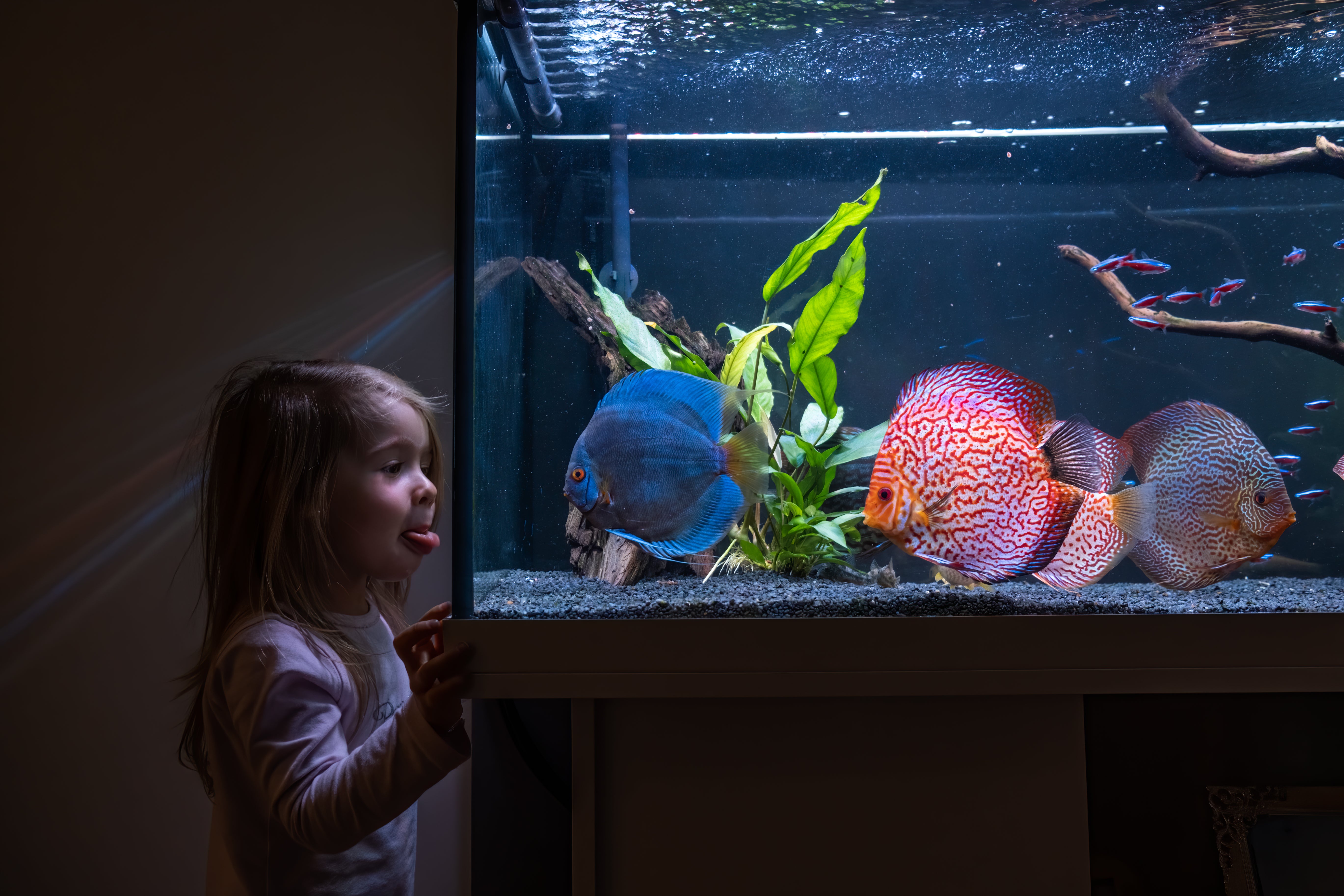Algae, the persistent and often unwelcome guests in aquariums, pose a multifaceted challenge for many aquarists. While some algae growth can be considered natural and relatively harmless, excessive or uncontrolled growth can disrupt the delicate balance of your aquatic environment, compromising aesthetic appeal, water quality, and the wellbeing of your cherished underwater inhabitants.
Effective algae control requires a comprehensive understanding of the various algae species, their growth dynamics, and suitable management strategies that promote a pristine, vibrant, and resilient aquatic sanctuary.
At Perfect Aquatics, one of the UK's largest aquatics specialists, our mission is to empower aquarists with the essential knowledge, innovative solutions, and unwavering support needed to master algae control, fostering an underwater realm that exudes clarity, mesmerising beauty, and an aura of tranquillity.
In this comprehensive guide, we will expound upon the fundamentals of algae control in the aquarium, delving into methods of identification, preventative measures, and natural solutions, equipping you with the strategies necessary to prevail over algae growth. As you navigate the complex battles and victories that define algae control, rely on the passion, expertise, and steadfast dedication of the Perfect Aquatics team to fuel and sustain your endeavours.
Algae Identification: Common Aquarium Algae Types and Characteristics
Familiarise yourself with the common algae types that propagate in aquariums:
- Green Algae: The most prevalent form of algae in aquariums, green algae include several types such as green water (suspended algae), green spot algae (hard, circular spots), and green hair or thread algae (strand-like formations). Generally, green algae thrive in aquariums with excessive nutrients, intense lighting, and inadequate plant growth.
- Brown Diatoms: Brown algae, or diatoms, typically form a brown, slimy film over surfaces in the aquarium. Diatoms often appear during the early stages of a new aquarium, as they thrive in environments with silicates and high nitrate levels.
- Red or Beard Algae: These slow-growing, reddish-brown or black algae can form in clusters or as tufts on plant leaves and aquarium surfaces. Red or beard algae tend to appear in established aquariums with low carbon dioxide levels and poor nutrient management.
- Blue-Green Algae (Cyanobacteria): Despite being referred to as algae, cyanobacteria are actually photosynthesising bacteria that produce a blue-green slimy film. This type of algae flourishes in aquariums with poor water quality or high levels of light and nutrients.
Preventative Measures: Algae Growth Deterrence and Water Quality
Implement proactive strategies to deter excessive algae growth and maintain water quality:
- Balanced Lighting: Limit your aquarium's exposure to direct sunlight and control artificial lighting duration (8-10 hours per day). Consider using a timer to regulate lighting and ensure a consistent day-night cycle.
- Nutrient Control: Regular water changes, proper feeding habits, and efficient filtration will help maintain optimal water parameters. Remove excess waste promptly and monitor nitrate and phosphate levels, as they contribute to algae growth.
- Healthy Plant Growth: Growing live plants will compete with algae for nutrients and help reduce their proliferation. Choose fast-growing plants, such as Hornwort or Water Wisteria, to more effectively outcompete algae for available resources.
- Clean Surfaces: Maintain clean aquarium surfaces, including decor, substrate, and the aquarium glass, to keep algae from gaining a foothold. Frequent maintenance will minimise the accumulation of algae propagules that can rapidly multiply.
Natural Algae Control Solutions: Biological and Mechanical Approaches
Explore natural solutions that keep algae in check while maintaining ecological balance:
- Algae-Eating Inhabitants: Introduce algae grazing species, such as Otocinclus catfish, Siamese algae eaters, or Nerite snails, to your aquarium. These creatures will control algae growth while not harming your aquatic plants or disrupting the natural balance.
- Aquatic Plants: Encourage healthy aquatic plant growth to create competition for nutrients and limit algae proliferation. Floating plants like Duckweed, or fast-growing plants like Elodea, can outcompete algae for nutrients and light.
- Manual Algae Removal: Regularly clean aquarium surfaces to remove algae manually. Use a magnetic algae scraper or an old toothbrush to clean the aquarium glass, decor, and equipment without damaging tank inhabitants or introducing harmful chemicals.
- Mechanical Filtration: Enhance water circulation and filtration to reduce excess nutrients and debris that contribute to algae growth. Utilise efficient filter media, such as activated carbon or filter floss, to effectively remove excess nutrients and promote optimal water quality.
Final Thoughts
The battle against excessive or unsightly algae growth in your aquarium is an ongoing and multifaceted challenge, requiring a comprehensive approach to identification, prevention, and natural control strategies. By mastering the nuances of algae control, you can confidently nurture a pristine, vibrant, and harmonious underwater environment that radiates health, tranquillity, and sublime beauty.
With the invaluable expertise, steadfast commitment, and passionate dedication of the Perfect Aquatics team, harness the knowledge and resources needed to triumph over algae growth and awaken the awe-inspiring, crystal-clear underwater haven that lies at the heart of your aspirations.
Embrace the mastery of algae control and transform your aquarium into a breathtakingly clear, vibrant, and harmonious aquatic wonderland with expert guidance, unparalleled resources, and unwavering support of Perfect Aquatics, your trusted ally in achieving the extraordinary. Shop at our aquatics store today!

